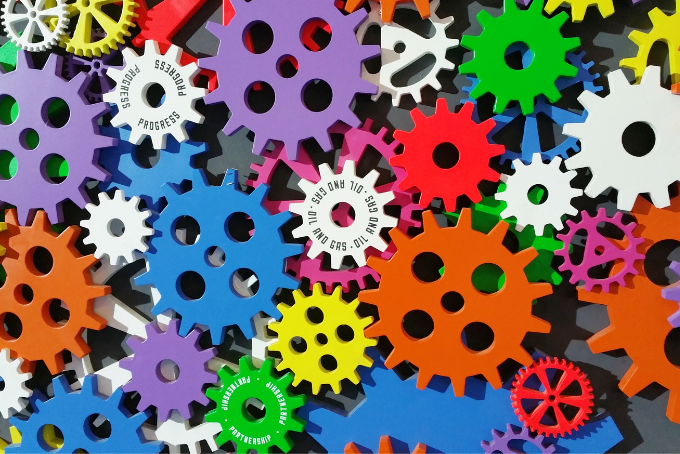
08 Mar Sustainability in Print
How sustainability is reshaping print priorities in the smart office.
Sustainability has become an increasingly important consideration for businesses across all industries, and the print industry is no exception. As companies look to reduce their environmental impact and improve their sustainability practices, print priorities in the smart office are being reshaped in a number of ways:
Reducing paper consumption: One of the biggest ways that sustainability is reshaping print priorities is by reducing paper consumption. Many businesses are now striving to become paperless, or at least reduce their paper usage significantly. This can be achieved through the implementation of digital workflows and the use of electronic documents and forms.

Implementing eco-friendly printing practices: Another way is by encouraging the use of eco-friendly printing practices. This includes using recycled paper, using soy-based inks, and reducing energy consumption through the use of energy-efficient printers and copiers.
Implementing print management software: Sustainability is also reshaping print by encouraging the implementation of print management software. This software can help companies to monitor and control their printing practices, reducing unnecessary printing and ensuring that print jobs are sent to the most efficient printer available.
Recycling and waste reduction: Finally, sustainability encourages businesses to implement recycling and waste reduction programs for their paper and printing materials. This includes recycling paper and ink cartridges, reducing the use of single-use products, and using environmentally-friendly disposal methods for printing waste.
Generally, sustainability is reshaping print priorities in the smart office by encouraging businesses to reduce their environmental impact and adopt more sustainable practices in their printing operations. By doing so, companies can not only reduce their carbon footprint but also save money and increase efficiency in the process.
How is the ‘right to repair’ affecting the print industry?
The “right to repair” is a concept that refers to the ability of individuals or businesses to repair their own electronic devices, including printers and other office equipment, without the need to rely on the original manufacturer. In the print industry, the right to repair has become an increasingly important issue, as many manufacturers have implemented practices that make it difficult for customers to repair their own devices or have them repaired by third-party repair services.
One of the main issues with the right to repair in the print industry is the use of software locks or digital rights management (DRM) systems that prevent unauthorized repairs, or the use of third-party parts. These systems can limit the ability of customers to repair their own devices or seek out more affordable repair services, as they may require proprietary parts or software tools that are only available from the original manufacturer.

Advocates for the right to repair argue that these practices limit competition and innovation in the repair industry, drive up costs for consumers, and contribute to e-waste by encouraging early device replacement rather than repair. They also argue that the right to repair is important for promoting sustainability by extending the lifespan of electronic devices and reducing the environmental impact of their disposal.
Several states in the United States, as well as the European Union, have introduced or indeed passed legislation to support the right to repair, and some printer manufacturers have begun to loosen their restrictions on repairs in response to public pressure. However, the issue remains controversial, with some manufacturers arguing that they need to protect their intellectual property and ensure the quality and safety of their products.
Energy Efficiency
Our manufacturers have made energy efficiency a top priority, as well as the circular economy which is helping to reduce reliance on virgin materials in the manufacture of copiers and printers, it has also made the designs more sustainable as well. They are also ensuring consumables such as toners are more efficient, with lower melting points requiring less energy to fuse toner onto the paper. Toner wastage is being minimised by ensuring cartridges keep on printing and don’t auto-eject until empty, therefore reducing the risk of users replacing cartridges before necessary.
Another addition manufacturers have implemented is longer life components, giving the machines a longer life span, requiring fewer service interventions, which has meant fewer engineer service and repair visits, lowering the environmental impact.
How can you refine workplace efficiency through the automation of processes?
Automating processes is an effective way to refine workplace efficiency by reducing manual labour, minimizing errors, improving quality, and increasing productivity. Here are some ways automation of processes can refine workplace efficiency:
Streamline repetitive tasks: Automation can eliminate repetitive and time-consuming tasks by automating them with software or machines, allowing employees to focus on more strategic and value-added work.
Reduce errors: Automation can help to reduce human errors that can occur when manual processes are in place. Automated systems are designed to work with a high degree of accuracy and consistency, reducing the likelihood of mistakes.

Increase speed and productivity: Automated processes can complete tasks faster than humans, which can result in increased productivity and efficiency. By automating processes such as data entry, invoicing, and inventory management, businesses can complete tasks quickly and with a higher level of accuracy.
Improve communication: Automation can also help to improve communication and collaboration within the workplace. By using automated systems to manage tasks and processes, teams can share information and collaborate more effectively, leading to better results.
Provide real-time data: Automated systems can provide real-time data and analytics, allowing businesses to make informed decisions quickly. This can help to identify areas where improvements can be made and optimize processes for maximum efficiency.
In essence, automating processes can refine efficiency in the workplace by eliminating repetitive tasks, reducing errors, increasing speed and productivity, improving team communication and collaboration, and providing real-time data and analytics. By doing this, businesses can improve their workflows, reduce costs, and increase their competitive edge whilst also operating sustainably.
Here at Newman we provide a range of industry-leading workplace technology and software solutions to help increase office efficiency and help organisations to print sustainably. For more information about sustainable print processes contact our experienced team at Newman on 01892 664155.

